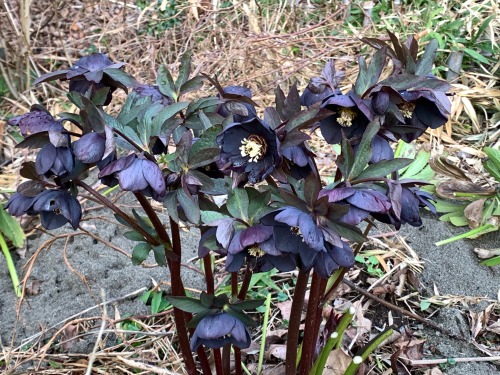“Pitcher Plant”
“Pitcher Plant”
I dislike the term “pitcher plant”. It reeks of outdated ignorance and describes a vast number of species from around the world, many of which are not closely related to each other.
As a botanist, and an evil one at that, I prefer to be precise with my language. You too can become an educated scientist and terrific snob by using the correct terms for each variety of “pitcher plant”. If you require education on the matter, allow me to inform you.
There are three families of “pitcher plant”: Sarraceniaceae, Nepenthaceae, and Cephalotaceae. Sarraceniaceae has 3 genera — namely Sarracenia, Heliamphora, and Darlingtonia. Nepenthaceae has a single genus (Nepenthes), and Cephalotaceae has a single species. An entire family with only one species. Ugh.
Now, they look quite distinct from each other, so here are some photos and facts.

This species belongs to Sarracenia, the North American or trumpet pitcher plants. Note the height and slender shape.

This is also a Sarracenia. Note the lack of height and squat shape. Most Sarracenia species look like one of these two — they are quite easy to identify. They are found in boggy, temperate areas around North America and reach a height of up to 4 feet tall.

This is a stunning example of a Nepenthes (tropical pitcher plants) species. These are what you likely think of when someone mentions “pitcher plants”. Beautiful, found in warm, humid regions of the world. They are climbing vines and pitchers can reach over a foot tall (this is species-dependent).

This is an example of Heliamphora, the sun pitchers. They can be found in South America. While still belonging to the family Sarraceniaceae, they are not as tall as Sarracenia, but still quite graceful. If you have a mind for Greek, you may wonder if the “heli” in Heliamphora is for sun (from “helios”). It is not. The name Heliamphora instead comes from “helos”, meaning marsh. The name “sun pitcher” is misleading and comes from a misunderstanding — these plants would be more accurately called “marsh pitchers”.

I have a passionate love-hate relationship with Cephalotus follicularis. Cephalotus is a monotypic genus (a genus with only one species) and of course it is Australian. They look similar to Nepenthes but are unrelated and much smaller — the plants reach just shy of 8 inches tall.
There are also the cobra lilies, Darlingtonia, which belong to Sarraceniaceae. Those are arguably similar enough to Sarracenia that they do not need to be discussed here. Darlingtonia is another monotypic genus within Sarraceniaceae.
Now you have absolutely no excuse. You have been informed on the major genera of “pitcher plants” and should weaponize this knowledge as you see fit.
The brilliant and brave may also wish to weaponize the plants themselves. Kindly send me updates if you do. I am ever so curious…
More Posts from Calystegia and Others
Some of you may have heard about Monarch butterflies being added to the Threatened species list in the US and be planning to immediately rush out in spring and buy all the milkweed you can manage to do your part and help the species.
And that's fantastic!! Starting a pollinator garden and/or encouraging people and businesses around you to do the same is an excellent way to help not just Monarchs but many other threatened and at-risk pollinator species!
However.
Please please PLEASE do not obtain Tropical Milkweed for this purpose!
Tropical milkweed (Asclepias curassavica)--also commonly known as bloodflower, Mexican butterflyweed, and scarlet milkweed--will likely be the first species of milkweed you find for sale at most nurseries. It'll be fairly cheap, too, and it grows and propagates so easily you'll just want to grab it! But do not do that!
Tropical milkweed can cause a host of issues that can ultimately harm the butterflies you're trying to help, such as--
Harboring a protozoan parasite called OE (which has been linked to lower migration success, reductions in body mass, lifespan, mating success, and flight ability) for long periods of time
Remaining alive for longer periods, encouraging breeding during migration time/overwintering time as well as keeping monarchs in an area until a hard freeze wherein which they die
Actually becoming toxic to monarch caterpillars when exposed to warmer temperatures associated with climate change
However--do not be discouraged!! There are over 100 species of milkweed native to the United States, and plenty of resources on which are native to your state specifically! From there, you can find the nurseries dedicated to selling native milkweeds, or buy/trade for/collect seeds to grow them yourself!!
The world of native milkweeds is vast and enchanting, and I'm sure you'll soon find a favorite species native to your area that suits your growing space! There's tons of amazing options--whether you choose the beautiful pink vanilla-smelling swamp milkweed, the sophisticated redring milkweed, the elusive purple milkweed, the alluring green antelopehorn milkweed, or the charming heartleaf milkweed, or even something I didn't list!
And there's tons of resources and lots of people willing to help you on your native milkweed journey! Like me! Feel free to shoot me an ask if you have any questions!
Just. PLEASE. Leave the tropical milkweed alone. Stay away.
TLDR: Start a pollinator garden to help the monarchs! Just don't plant tropical milkweed. There's hundreds of other milkweeds to grow instead!

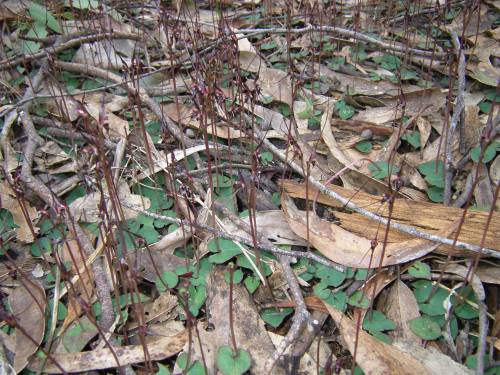
Acianthus caudatus.
Orchidaceae: Diurideae.
By Start with the Leaves. [x]
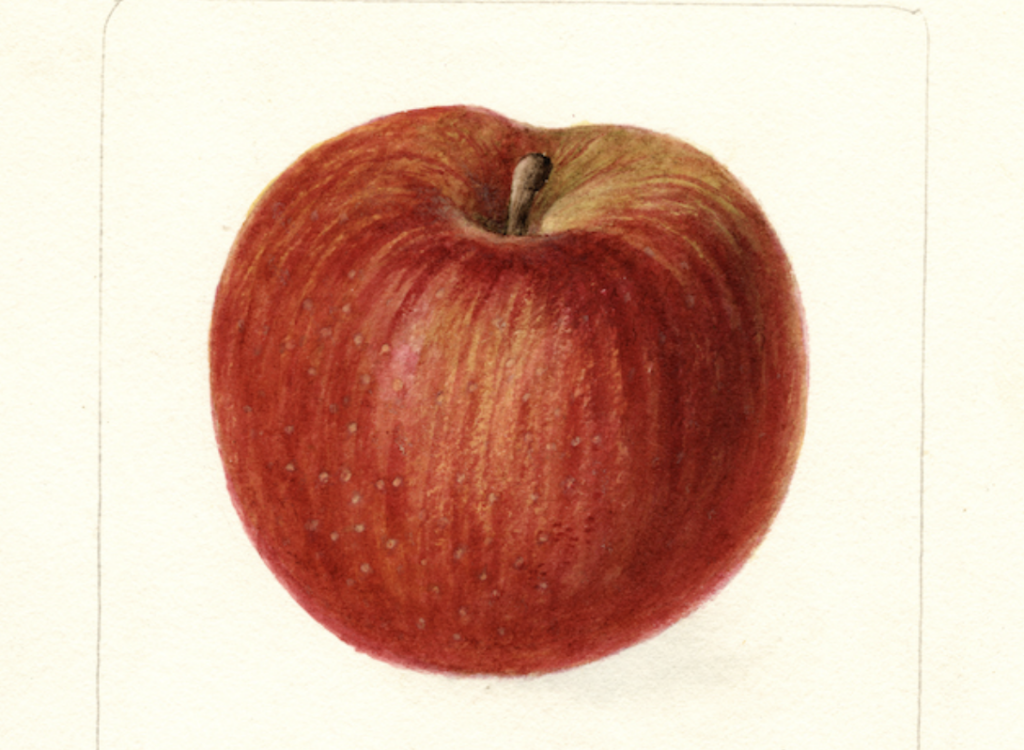
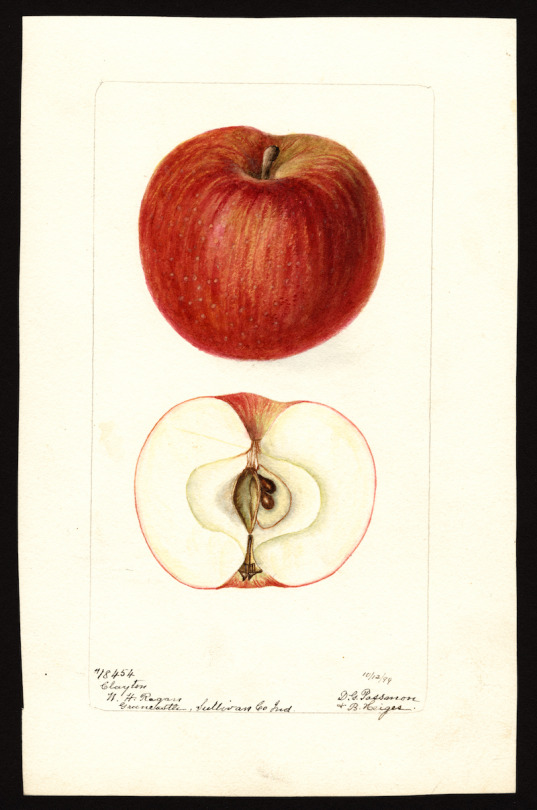
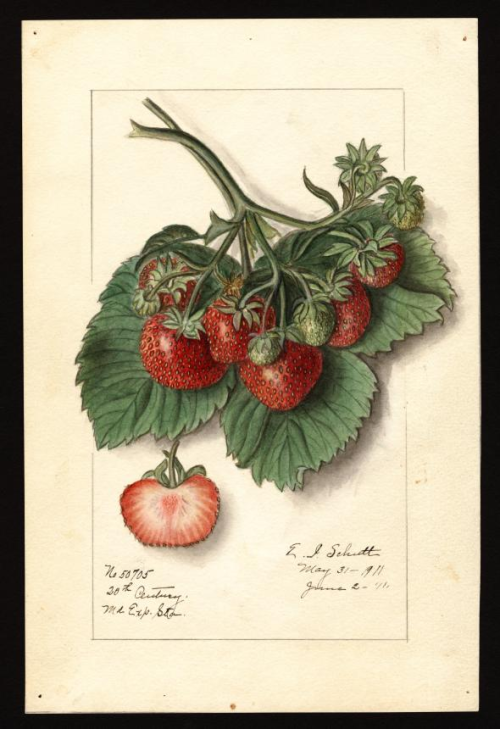
At what point does an exploration of these images tip from information into knowledge? It’s hard to say, but it’s unlikely we would pursue either one if that pursuit didn’t also include its share of pleasure. Enter the USDA’s Pomological Watercolor Collection here to [view] and download over 7,500 high-resolution digital images like those above.
I wonder how many of these fruits & vegetables have changed since 1886?


The consequences of allowing taxonomy to falter are significant. Every year, botanists around the world discover around 2,000 new plants, a number that has held fairly steady since 1995, suggesting that there are still tens of thousands of plants to introduce to science. Three-fourths of the new species are already threatened with extinction. If we don’t have taxonomists to describe these species, we stand little chance of saving them — or their habitat.
With the threats of climate change, nuclear war and artificial intelligence bearing down, the act of simply itemizing our plants can seem trivial. But when I asked Art Gilman, a botanist, taxonomist and author of “The New Flora of Vermont,” why it matters, he paused in the careful way of a scientist. He gave no answer about curing cancer or revolutionizing food systems. “We lose the opportunity to know our world,” he said, finally.
-
 m-has-a-blog reblogged this · 1 week ago
m-has-a-blog reblogged this · 1 week ago -
 asterizmz liked this · 1 week ago
asterizmz liked this · 1 week ago -
 greatbasinrattlesnake liked this · 1 week ago
greatbasinrattlesnake liked this · 1 week ago -
 wakingfromthewater reblogged this · 1 week ago
wakingfromthewater reblogged this · 1 week ago -
 terrifiedhouseplant liked this · 1 month ago
terrifiedhouseplant liked this · 1 month ago -
 bluebird1348 reblogged this · 1 month ago
bluebird1348 reblogged this · 1 month ago -
 catherinehellens reblogged this · 1 month ago
catherinehellens reblogged this · 1 month ago -
 an-eddy-in-the-river reblogged this · 1 month ago
an-eddy-in-the-river reblogged this · 1 month ago -
 feralaquarist liked this · 1 month ago
feralaquarist liked this · 1 month ago -
 anthropomorphicbeancake liked this · 1 month ago
anthropomorphicbeancake liked this · 1 month ago -
 iamemeraldfox reblogged this · 1 month ago
iamemeraldfox reblogged this · 1 month ago -
 iamemeraldfox liked this · 1 month ago
iamemeraldfox liked this · 1 month ago -
 thetemperancecard reblogged this · 1 month ago
thetemperancecard reblogged this · 1 month ago -
 silvanwitch12 liked this · 2 months ago
silvanwitch12 liked this · 2 months ago -
 synfy reblogged this · 2 months ago
synfy reblogged this · 2 months ago -
 the-one-crazy-beyond-logic liked this · 2 months ago
the-one-crazy-beyond-logic liked this · 2 months ago -
 starryknight-dragonarts liked this · 2 months ago
starryknight-dragonarts liked this · 2 months ago -
 thepoolisdead reblogged this · 2 months ago
thepoolisdead reblogged this · 2 months ago -
 chrisbrannorling reblogged this · 2 months ago
chrisbrannorling reblogged this · 2 months ago -
 thatcrazypoppiigirl reblogged this · 2 months ago
thatcrazypoppiigirl reblogged this · 2 months ago -
 thatcrazypoppiigirl liked this · 2 months ago
thatcrazypoppiigirl liked this · 2 months ago -
 missimbalance reblogged this · 2 months ago
missimbalance reblogged this · 2 months ago -
 zandalar-the-golden-throne reblogged this · 2 months ago
zandalar-the-golden-throne reblogged this · 2 months ago -
 birbry liked this · 2 months ago
birbry liked this · 2 months ago -
 assorted-things liked this · 2 months ago
assorted-things liked this · 2 months ago -
 nostalgiathriving reblogged this · 2 months ago
nostalgiathriving reblogged this · 2 months ago -
 chef-blah reblogged this · 2 months ago
chef-blah reblogged this · 2 months ago -
 wndelta liked this · 3 months ago
wndelta liked this · 3 months ago -
 muffintonic reblogged this · 3 months ago
muffintonic reblogged this · 3 months ago -
 itsthekiks reblogged this · 3 months ago
itsthekiks reblogged this · 3 months ago -
 forgetful-amoeba reblogged this · 3 months ago
forgetful-amoeba reblogged this · 3 months ago -
 sidui liked this · 3 months ago
sidui liked this · 3 months ago -
 zeeebiey liked this · 3 months ago
zeeebiey liked this · 3 months ago -
 slujactivist liked this · 3 months ago
slujactivist liked this · 3 months ago -
 thebrazilianfan liked this · 3 months ago
thebrazilianfan liked this · 3 months ago -
 brazilianwalk reblogged this · 3 months ago
brazilianwalk reblogged this · 3 months ago -
 jack-valentine reblogged this · 3 months ago
jack-valentine reblogged this · 3 months ago -
 soap-with-bite-marks reblogged this · 3 months ago
soap-with-bite-marks reblogged this · 3 months ago -
 soap-with-bite-marks liked this · 3 months ago
soap-with-bite-marks liked this · 3 months ago -
 faurash reblogged this · 3 months ago
faurash reblogged this · 3 months ago -
 faurash liked this · 3 months ago
faurash liked this · 3 months ago -
 arlothia reblogged this · 3 months ago
arlothia reblogged this · 3 months ago -
 arlothia liked this · 3 months ago
arlothia liked this · 3 months ago -
 fairytalesandimaginings liked this · 3 months ago
fairytalesandimaginings liked this · 3 months ago -
 ravings-of-a-mad-scientist-2 reblogged this · 3 months ago
ravings-of-a-mad-scientist-2 reblogged this · 3 months ago

icon: Cressida Campbell"I know the human being and fish can co-exist peacefully."
35 posts


